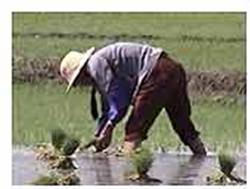|
|
Urgent Need for China to Adjust Pension System, Says Report
By Goh Sui Noi, The Straights Times
September 9, 2004

BEIJING - Faced with a rapidly ageing population, China has pinpointed the next 20 years as a critical period for developing its old-age insurance system.
Already, with more than 10 per cent of the Chinese population now over the age of 60, there is one retiree for every three workers in the cities.
'In 20 years' time, when the ageing process will have peaked, if we do not adjust our current policy, every 10 workers will have to support four or even more retirees,' said Mr Hu Xiaoyi, spokesman for the Labour and Social Security Ministry.
'In consideration of such future risk and challenge, it is necessary for us to adjust our system,' he told a press conference on Tuesday held to publicise the release of the government's first White Paper on social security.
China at present has a 'pay as you go' system, in which contributions to retirement funds go to paying out pensions to the 36 million retirees.
In 1997, the government instituted a unified old-age insurance system for urban workers comprising a social pool of funds and personal accounts, but in most cases, these personal accounts remain empty.
This is because under the old planned economy, the government and state-owned enterprises, for which most people worked, took care of retirement needs.
'At that time, there was no consideration given to the large numbers of retirees in the days to come and the pressure on funds that would have to be borne,' said Mr
Hu.
Therefore, there was no such thing as personal accounts or accumulation of pension funds at the time.
The result was that the 300 billion yuan (S$62 billion) to 400 billion yuan of pension funds collected yearly from workers and their employers under the unified system went mainly towards paying the pensions of the current pool of retirees.
This would have to change, said Mr Hu.
'To meet the enormous pressure that an ageing population will bring, we must change this 'pay as you go' model to one which is partly accumulative, which is to build up funds in the personal accounts of workers,' he said.
But officials on Tuesday did not elaborate on how this might be done.
However, they pointed out that a pilot project that had been started in 2001 in the north-eastern province of Liaoning was extended to neighbouring Jilin and Heilongjiang this year.
These north-eastern provinces, which formed the old industrial base of China, have the most number of state-owned enterprises.
Many of them are no longer profitable, and therefore face complex social security problems.
The officials also acknowledged that workers, particularly migrant workers from rural areas, were reluctant to participate in old-age insurance plans for fear they would not get their money back.
Old-age insurance now covers about 155 million people in urban centres, over half of the 250 million urban workers that the government hopes to reach.
The government has also started old-age insurance schemes to cover rural areas, where 70 per cent of the population lives.
About 54 million people have taken part, with nearly two million farmers drawing pensions - a far cry from the government's target of covering 450 million rural workers.
|
|



